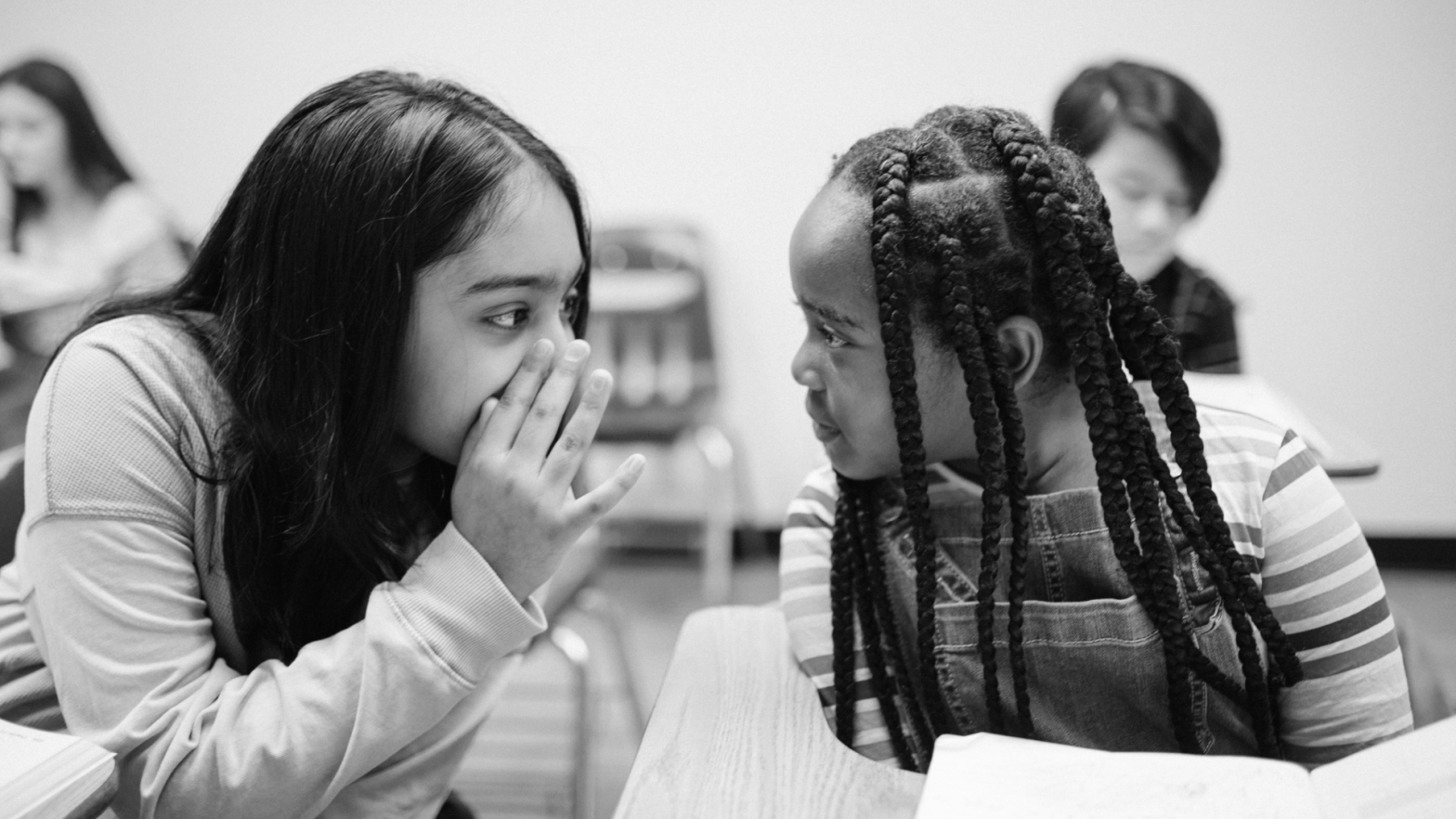We use the Konjunktiv I for dependent speech to distance ourselves from another person’s speech and to emphasize that we are only conveying their words, not our own opinion. Konjunktiv I is mainly used in official speech. You will come across it when watching TV, listening to the radio or reading newspapers. In everyday conversation it is used quite rarely.
How to form Konjunktiv I in the present tense
To form the Konjunktiv I form of a verb, remove the “-en” ending from its infinitive form. This will leave you with the subject of the verb itself, i.e. its most important part. Then add the “-e” ending, followed by the corresponding personal ending, just as you do when conjugating in the present tense of Präsens. The exception is the third person singular – er/sie/es – where the ending is the same as for the first person singular – ich. It is this person (er/sie/es) that we use most often in Konjunktiv I.
See this in the examples of the verbs haben, sein and sprechen:
- Remove the “-en” ending from the verb in the infinitive: hab
en, sein, sprechen. - Then add the ending “-e”.
This gives you the Konjunktiv I form: habe, sei and spreche. Now all that remains is to add the appropriate personal ending. Take a look at the table below:
| sein* | haben | sprechen | |
|---|---|---|---|
| ich | sei | habe | spreche |
| du | sei(e)st | habest | sprechest |
| er/sie/es | sei | habe | spreche |
| wir | seien | haben | sprechen |
| ihr | seiet | habet | sprechet |
| Sie/sie | seien | haben | sprechen |
*The conjugation of the verb sei is irregular.
Example sentences in Konjunktiv I
When forming sentences in Konjunktiv I, remember to change personal pronouns and possessive pronouns.
For example, imagine that your friend Marta tells you: Meine Schwester ist schwanger. (My sister is pregnant.) If you want to convey this information in dependent speech, further change meine (my) to ihre (her): Marta sagte, dass ihre Schwester schwanger sei. (Marta said that her sister was pregnant.)
We use Konjunktiv I to convey other people’s words, so sentences with this construction will most often begin with phrases such as sie sagte… (she said), er behauptet… (he said), er fragte… (he asked). Look at some more example sentences:
| Direct Speech | Reported Speech |
|---|---|
| Er sagt: “Ich gehe zur Schule.” | Er sagt, er gehe zur Schule. |
| Sie behauptet: “Ich habe keine Zeit.” | Sie behauptet, sie habe keine Zeit. |
| Judith sagt: “Ich bin zu Hause.” | Judith sagt, sie sei zu Hause. |
| Seine Mutter sagte: “Er hilft gerne im Garten.” | Deine Mutter sagte, dass du gerne im Garten helfest. |
| Er fragte: “Ist das dein Hund?” | Er fragte, ob das mein Hund sei. |
| Die Zeitung berichtet: “Wir haben Probleme mit unseren Verkaufszahlen.” | Die Zeitung berichtet, dass sie Probleme mit ihren Verkaufszahlen habe. |
Note that you can form sentences with dependent speech in different ways. If you choose to use the conjunct dass (that), remember that it is followed by a subordinate sentence formation (verb at the end of the sentence), e.g. “Sie behauptet, dass sie keine Zeit habe.” You can also choose to omit the conjunct. Then use the verb standardly in the second place in the sentence, e.g. “Sie behauptet, sie habe keine Zeit.” You’ll use the conjunction ob to form questions – more about that in the article on how to use Konjunktiv I. If you want to learn more about conjunctions, read this article.
How to create Konjunktiv I in the past tense
Now imagine this situation. You make an appointment with your two girlfriends. One of them, let’s call her Judith, is very unpunctual and is often late. This is the case today. So you sit with the other friend and together you wait for Judith to enter the restaurant. Then a text message comes to you:
“Entschuldigung, ich bin in einer halben Stunde da. Ich habe mich verlaufen.” (I’m sorry, I’ll be there in half an hour. I’ve lost my way.)
“Ist das Judith? Was hat sie gesagt?” (Is that Judith? What did she say?) asks your colleague.
Sie sagte, sie habe sich verlaufen. (She said that she got lost.)
The formation of Konjunktiv I in the past tense is very simple. If you are conveying an utterance that was originally in the past tense (regardless of whether it was in the Perfekt or Imperfekt), you construct the sentence in the same way as in the Perfekt tense, except that you use the auxiliary verb (haben or sein) in Konjunktiv I (habe or sei). The rest of the verb remains in Partizip II form.
The expressions of time and place also change. For example, if your colleague says, “Heute habe ich Geburtstag,” (Today is my birthday), then when talking about it to someone else the next day you will say: “Er sagte, er gestern Geburtstag gehabt habe.” See more examples of such changes:
| Direct Speech | Reported Speech |
|---|---|
| heute (today) | an diesem Tag (that day) |
| Er behauptet: “Ich gehe heute zur Arbeit.” | Er behauptet, dass er an diesem Tag zur Arbeit gegangen sei. |
| morgen (tomorrow) | am nächsten Tag/ am Tag danach (the following day) |
| Er fragte: “Gehst du morgen ins Kino?” | Er fragte, ob ich am nächsten Tag ins Kino gehe. |
| gestern (yesterday) | am vorherigen Tag/ am Tag zuvor (the previous day) |
| Sie sagte: “Ihr habt gestern den ganzen Tag gearbeitet.” | Sie sagte, ihr habet am Tag zuvor den ganzen Tag gearbeitet. |
| jetzt (now) | in diesem Moment (at that moment) |
| Sie behauptet: “Er sehe jetzt fern.” | Sie behauptet, du habest in diesem Moment ferngesehen. |
| nächste Woche (next week) | in der kommenden Woche (the following week) |
| Sie sagte: “Ich fahre nächste Woche in den Urlaub.” | Sie sagte, dass sie in der kommenden Woche in den Urlaub fahre. |
| letzte Woche (last week) | in der vergangenen Woche (the previous week) |
| Er sagte: “Ich war letzte Woche krank.” | Er sagte, dass er in der vergangenen Woche krank gewesen sei. |
| hier (here) | da/dort (there) |
| Er sagte: “Ich war hier gestern.” | Er sagte, er sei am Tag zuvor dort gewesen. |
If you are interested in finding out more, read our article on how to express dependent speech (Konjunktiv I).







